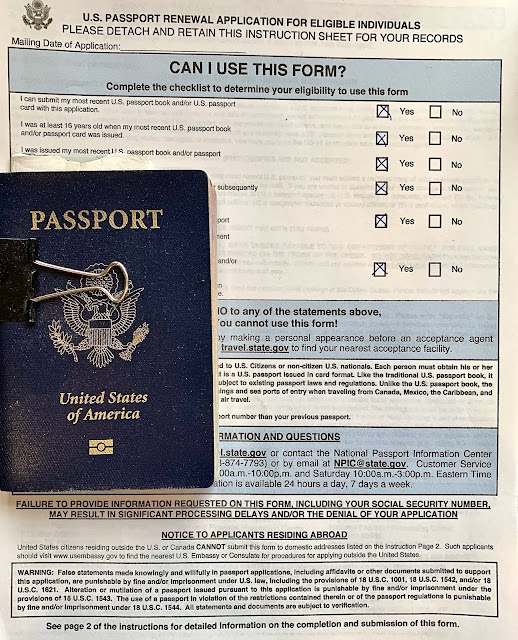Tuesday afternoon, I received my first dosage of the Moderna COVID-19 vaccine, and am scheduled for the follow-up in about a month. The vaccination itself was painless but, later that night, my left shoulder started feeling sore and I could not shift positions as I normally would during sleep. In the morning I awoke with a slight headache, but that subsided after a walk with the dog(s) – unfortunately, as I’m recovering from ankle surgery, I’m in a walking boot and can’t handle them myself, but my wife and daughter can still hold the leashes.
Since then, the pain has dissipated and I look forward to receiving the booster shot that should provide immunity from the virus—liberating me, in theory, to travel again, though there are so many contingencies that I don’t anticipate returning to South America until at least the end of the year.

My passport paperwork awaits submission.
One of those contingencies is a new passport. Mine expired in September and, under the previous US administration (as inept as it was loathsome), the State Department inexplicably started slow-walking these essential documents for a time. In fact, even some Republicans called the policy “unacceptable,” “inadequate,” and “slow and inefficient.” Hearing other anecdotal evidence from friends and acquaintances, and given that I wasn’t likely to travel any time soon, I chose to delay my renewal application until the Biden-Harris administration replaced the worst Secretary of State in the country’s history.
Now it’s the morning after a four-year nightmare and, while I have no immediate travel plans, I feel confident to submitting my application to a professionally run government department. Moderna and a new government may be the vaccines we needed, but they’re only a start. Still, it seems, we may be better in a better position than our trans-Atlantic cousins suffering through the self-inflicted economic and political traumas of Brextremism—not to mention their own issues with the pandemic.






